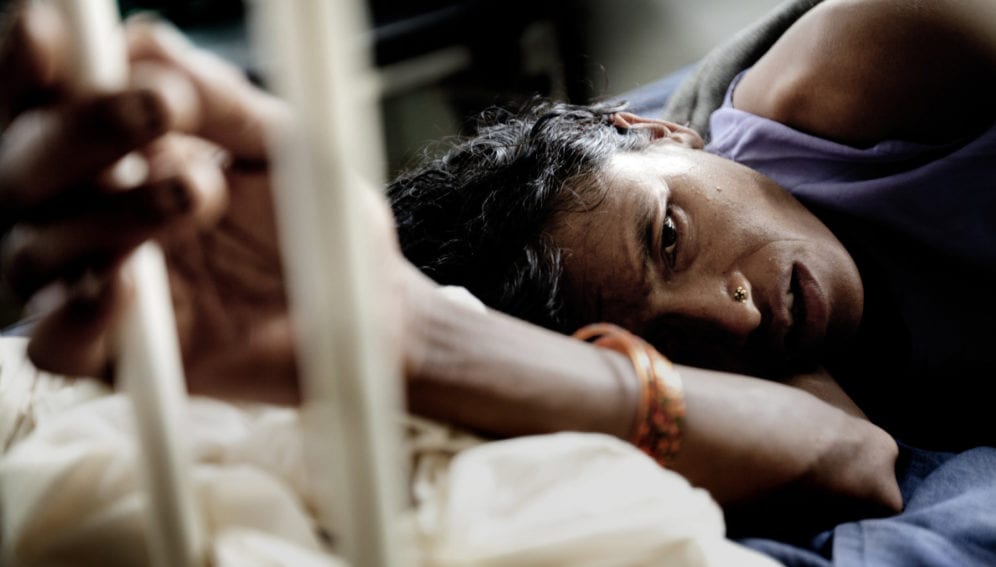By: Shahani Singh
Send to a friend
The details you provide on this page will not be used to send unsolicited email, and will not be sold to a 3rd party. See privacy policy.
[KATHMANDU] While studies warn that quake-devastated Nepal needs to step up surveillance for cholera outbreaks, this resource-poor, mountainous country lacks the necessary laboratories and other infrastructure.
In the aftermath of the 25 April quake, the country’s Epidemiology and Disease Control Division (EDCD), in collaboration with the Johns Hopkins Bloomberg School of Public Health, Nagasaki University and the International Vaccine Institute (IVI), Seoul, released a report talked of the high possibility of a cholera outbreak this year.
“The conditions (inadequate water supply, sanitation, and hygiene) favourable for cholera, as demonstrated by repeated outbreaks over the years, have worsened following the earthquake,” the report states.
The “risk” comes from issues around the environment and pathogen-host dynamics following natural calamities such as flooding or earthquakes that increase the potential for cholera outbreaks, the report says. Six districts — Lalitpur, Gorkha, Okhaldhunga, Kavre, Makwanpur, and Sindhuli — were identified as lacking the labs and infrastructure needed to detect and confirm cholera.
“In principle, it is best practice to respond to lab-confirmed cases. However, surveillance is limited and extremely challenging, especially in areas in the mid-hills, when time is of the essence for vaccine mobilisation,” Anuj Bhattachan, associate research scientist at IVI tells SciDev.Net.
Proposals to acquire new stockpiles for pre-emptive vaccination in regions of high risk were repeatedly rejected by WHO’s International Coordinating Group (ICG) — which coordinates the best use of a limited number of vaccines — due to lack of lab-confirmed data.
After three rejections from the ICG for a pre-emptive campaign this year, Nepal has seen a “pre-emptive versus reactive” debate over vaccines happening in a context of poor surveillance, limited lab infrastructure and high risk assessment.
“The question here is whether we should go through the lengthy process of lab-confirmation, application, approval and delivery of vaccines to remote regions, or whether, in the context of high risk for outbreaks, be preventive?” asks Bhattachan.
The IVI, along with the WHO, UNICEF and the DOVE (Delivering Oral Vaccine Effectively) Project, recently ran an oral cholera vaccination campaign in Sisdole, Nuwakot district, using leftover stocks from last year’s campaign in the Rautahat district.
“The campaign in Rautahat was a “reactive” one and followed an outbreak detected by the centrally located National Public Health Laboratory (in Kathmandu),” Bhattachan explains.
An article published in PLoS Neglected Tropical Diseases last month (August) notes that “efficient systems for transporting specimens to central laboratories for culture and identification are needed, which is non-trivial given Nepal’s topography and transportation infrastructure.”
The authors suggest alternative strategies such as education, hygiene, water, and sanitation campaigns, and coordinated early warning systems to prevent a large-scale cholera outbreak.
Deploying an early warning system in post-earthquake Nepal, the study says, is challenging. “There are limited systems and laboratory capacities for active disease surveillance, particularly in the most affected areas outside the Kathmandu Valley.”
“Patients have to travel to Kathmandu to be admitted to hospitals and take a culture test — by then they would have reached a critical condition,” Baburam Marasini, director general of the EDCD, tells SciDev.Net.














